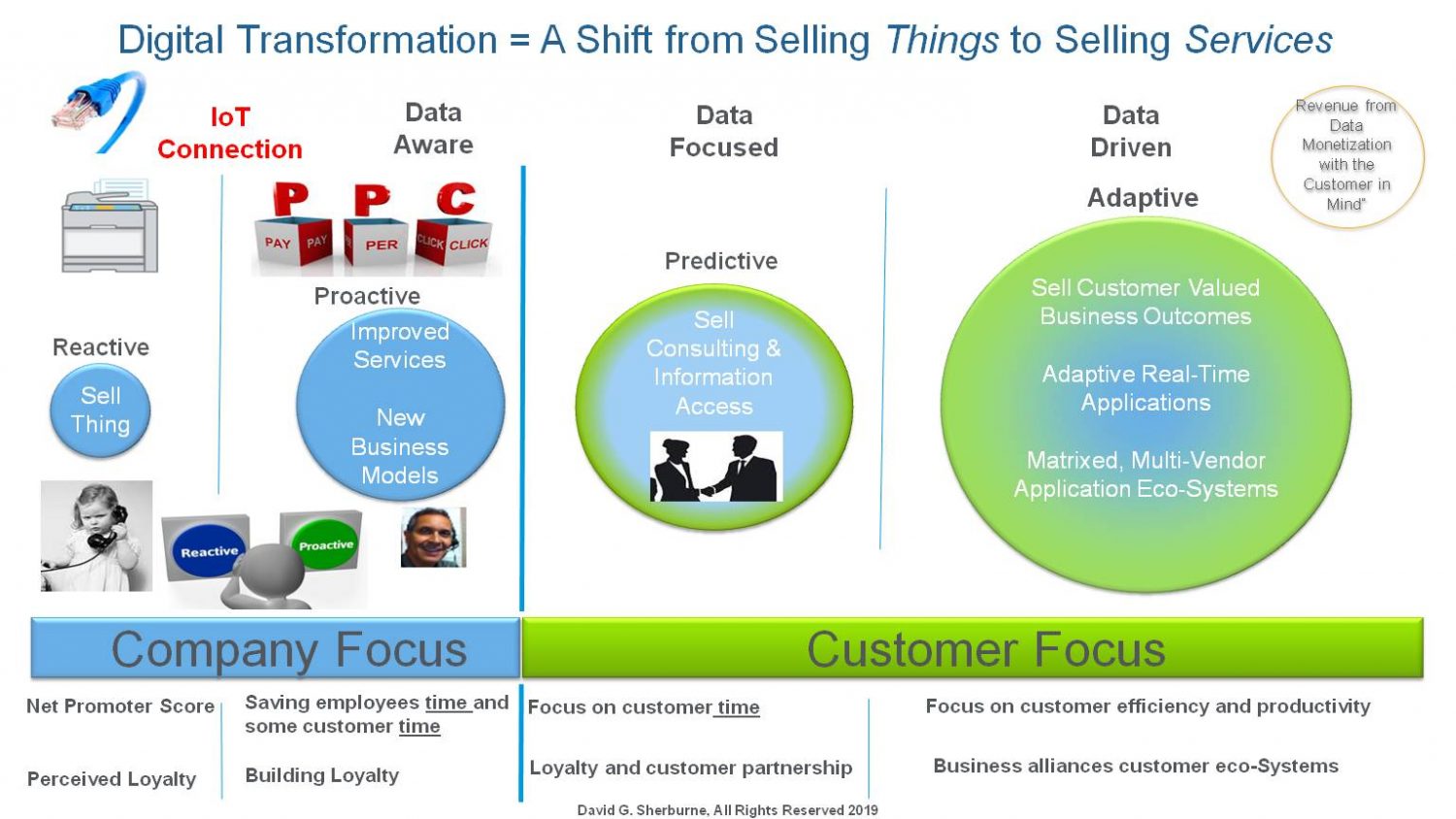Lets set the stage for discussion by presenting a model that we can use as reference. There has been attempts over the years to drive companies to focus on the customer (VOC, Focus Groups, etc,) but many existing companies have primarily seen the customer as a means to an profitable end. A few companies that had true inspirational leaders like Eastman Kodak’s founder George Eastman in the 1800s and today’s Jeff Bezo’s founder of Amazon understood that providing a simple and faster experiences to customers was the mission. “ You click the button and we do the rest” made it simple for Kodak’s customers to obtain what was valuable to them, a memory of a moment in time. This simple concept launched both companies to the top of their market. Today companies like Amazon and Netflix see that making it easier to get want you want is the way to the digital promise land. Today Eastman Kodak is gone because it was unable to remain focused on making it easier for the customer. During the digital photography revolution Kodak reverted to an internally focused mindset and lost their dominance to the simplicity and the low cost of digital photography. It’s an ironic and iconic tale for the history books given the early focus by George Eastman on the customer. To think Kodak made one of the first consumer digital images but lacked the leadership to consider what this promising new technology would mean to its customer base shows how important it is to know the customer. Today the world runs on images and Kodak is a foot note buried by the technology it created. In the new order Amazon and Netflix are examples of companies that have thought about the customer first and delivered the customer experience more easily than their competition and continue to change the world.
Here are some examples;
Netflix saves me time by eliminating useless time wasting commercials and by making it easy for me the find what I want to watch. They allow me to take entertainment with me easily on the road. Netflix eliminates the endless channel surfing and device lock down provided by the old fashion cable companies.
Amazon makes it easy for me to order anything and have it shipped to my doorstep in less than 48hrs. I can find almost anything from tractor parts to detergent. They provide what I want, when I need it, and its effortless. They also help me run my household with the Alexa digital assistant. Leveraging Alexa they have become the hub for all my home automation devices offering me a totally matrixed experience that gives me organized lists, entertainment, music, news and operates my many home automation devices from disparate companies. Amazon operates at will in all three of the transformation circles shown in the model above and honestly I am loyal to Amazon and totally impressed by their digital strategy!
In return for easy living I give companies like Amazon access to my life, tons of data and lots of money buying stuff. So far they have used their access to my life responsibility, offering me better and better services over time. As soon as they sell my information or use it in a way that is not in my best interest then I will no longer be a loyalist and 15 years of relationship will be gone in a minute. It is very important to remember that keeping the customer in mind is paramount to long term success in the digital world.
I have been using this model for over 6 years to help people interested in transformation understand the opportunity space that exists. The important part of this model is to realize that there are two distinct halves. The left-hand blue colored side illustrates that companies might begin by focusing internally on operations and driving benefits for customers through better service experiences. In this space there will be productivity gains and potentially new revenue streams from leasing and “pay per unit” selling models. It is very important for customers to have a seamless experience if you plan to be perceived as a digital leader.
The right half (greenish) portion of this model represents a shift from an internal focus towards customers in order to understand and create value for THEM across their respective value chains. Moving from an internal to a true customer perspective is the “shift” that progressive companies are making today to stay ahead of their competition as they digitally transform.
Many companies today are just getting started and so they are on the left side of this model, still selling things and maybe driving some service efficiencies with limited data sets coming back from their connected devices. Companies that are selling things should consider how device data could help save time in their service organizations. They should consider internal productivity objectives where they can save their own resources time and energy and serve their customer base better. True Digital Transformation is a long process so starting with an internal project is a much easier than trying to organize efforts that include customers and other external parties. Once some success comes to the transformation efforts internally, companies can extend that thinking to other more complex opportunities that include customers. When companies truly engage customers they will need to allocate time and energy to truly understand what their customers value.
As a simple starter example consider leasing a product as a service as a logical first step. Do this only when internal service and reliability have proven to be exceptional because reliability is table stakes. Its important to note that when a product is leased or “servitized” the manufacturer becomes its own service consumer. That’s why optimizing service first might be a good place to start!
I want to emphasize that the focus on the customer value is the major “shift” that is occurring in this digital “Age of the Customer”. This is the transformation that is really changing markets today. Companies that truly internalize this shift will be successful at using data to build brand loyalty and then be able to use data combined with that loyalty to build a long lasting partnership with their customers.
I hope you enjoy this blog and this model. I will be spending the next few sessions exploring different aspects of this model and would appreciate your perspective and input on my thinking as we all move forward in the new digital world.
Thank you for taking your valuable time to read this blog and I hope that it has provided corresponding value to your thinking.


